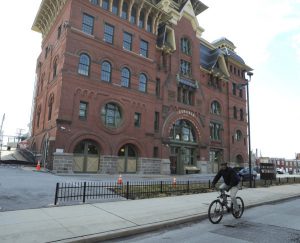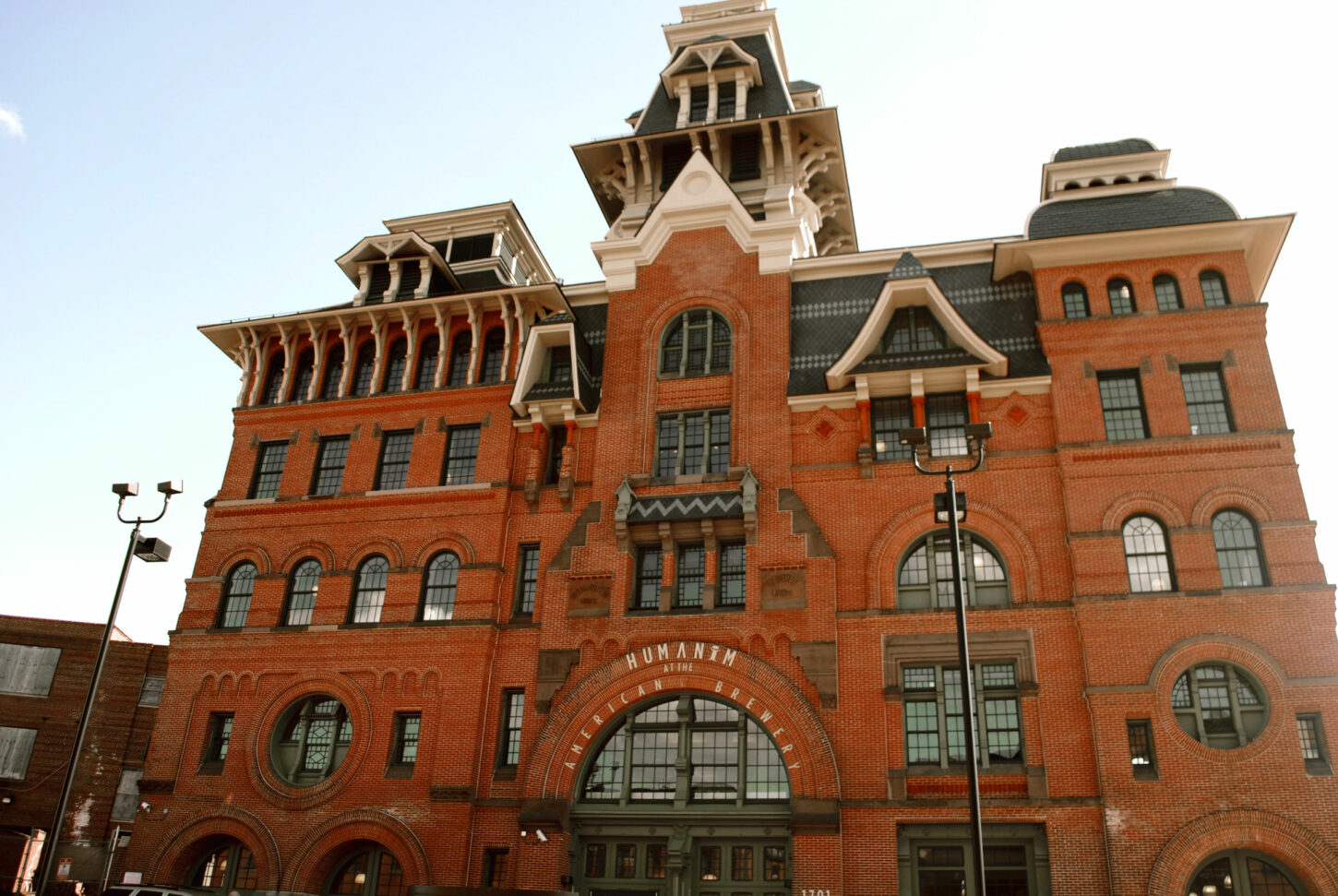After moving to Gay Street in April 2009, Humanim officials found their new home to be roomy and welcoming.
Written by Jacques Kelly and originally published March 2014 by Retro Baltimore from The Baltimore Sun / Photo by Lloyd Fox, The Baltimore Sun
It’s been nearly six years since I last visited East Baltimore’s Victorian landmark, the American Brewery. Rescued in 2008 after a lengthy period of abandonment, its restoration boosted the outlook of the Broadway East neighborhood. I was curious about what would happen when a Columbia-based nonprofit established a city presence atop this Gay Street hill.

The answer turned out to be simple. While the community has one of the city’s highest unemployment rates, it now has a proud tower where qualified people get the training to get a job. I moved along Lanvale and Federal streets and thought the neighborhood appeared cleaner than on my last visit. This is not to say that there aren’t many vacant and collapsing homes here. But at least there is a highly visible emblem of success.
Humanim, founded in 1971 to serve individuals with disabilities, owns and runs the old brew house. Humanim works with organizations such as Movable Feast, Episcopal Community Services of Maryland, the Center for Urban Families and Lutheran Social Services.
“We do whatever it takes to get jobs created in the city,” said Cindy Plavier-Truitt, Humanim’s chief jobs maker.
Her staff worked with clients who were prospective employees in hospitality training at the Four Seasons Hotel in Harbor East, one of the landmarks visible from the old brewery’s upper levels.
And on my recent visit, I heard how Humanim officials are now working with men who cope with tremendous barriers to traditional employment. Some have been incarcerated; others lack marketable skills. The program is called Details and the clients learn “precision deconstruction.”
What happens is that formerly unemployed men — no women have signed up so far — learn how to take buildings apart, brick by brick, along with the floorboards, copper piping, and electrical and mechanical components.
“The beautiful thing is that as these guys learn to take the parts out, they also get the opportunity to see how they went in,” said Jeff Carroll, the director of Details.
Humanim staff now have 50 formerly unemployed Baltimoreans working along the East Coast, dismantling buildings that would have once been bulldozed and carted off to landfills.
“A lot of our men have never been far outside Baltimore,” said Plavier-Truitt. “They have never crossed the Delaware Memorial Bridge.”
The Humanim crews work in the fanciest communities of the Hamptons and throughout Long Island, and along the resorts of New Jersey. They deconstruct the residences of hedge-fund moguls who love their ocean views but hate their homes, which might be all of 20 years old but not good enough for today.
In short, these guys, trained right here on Gay Street, do tear-downs using their basic manual skills. These job assignments put them to work, where they learn skills that often lead to other jobs in the construction industry.
“They gain a skill set as they learn,” said Carroll. “They extract materials and preserve the value for reclamation and reuse.”
The copper piping and bricks are not discarded. They are brokered through recyclers and other firms who repurpose the materials. It is somewhat like donating your old clothes to a charity, rather than putting them in the trash.
“Out of the city, our teams learn management skills and independence,” said Carroll. “Many of our workers rise to crew leaders and on to be foremen. They manage their own teams. They call the shots.”
After moving to Gay Street in April 2009, Humanim officials found their new home to be roomy and welcoming. There is scarcely a window that lacks a spectacular view of Baltimore. The renamed Humanim at the American Brewery became popular as a community gathering place. Businesses also rent the artfully repurposed grain silos and fermenting tank areas for workshops.
“We seem to be popular with community groups, who we let meet here for free, and with corporations, who pay a fee,” said Plavier-Truitt.
See more photos of the American Brewery building through the years at The Sun’s Darkroom blog.
